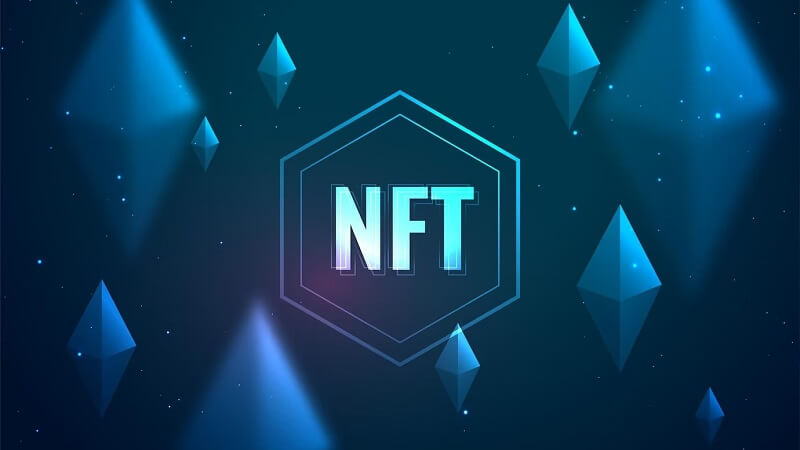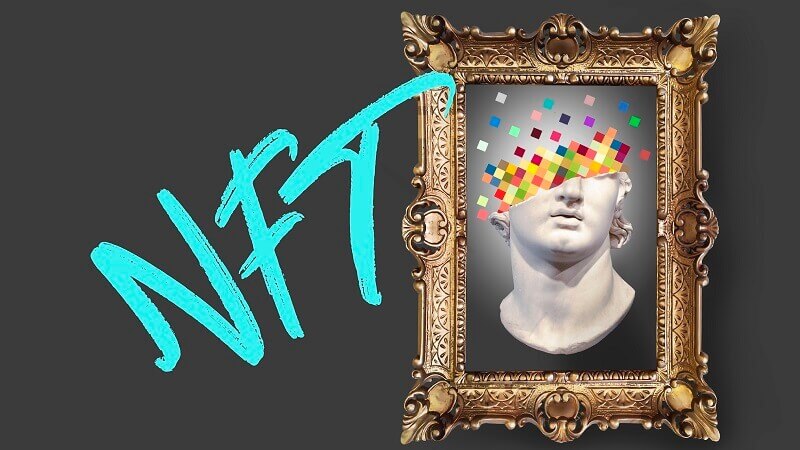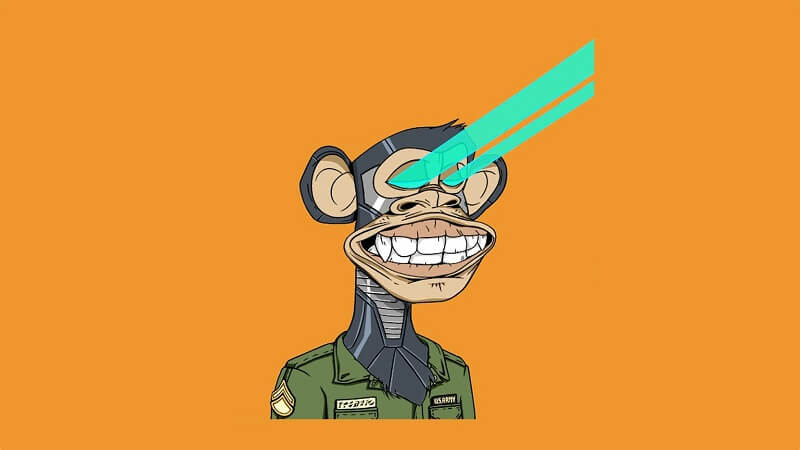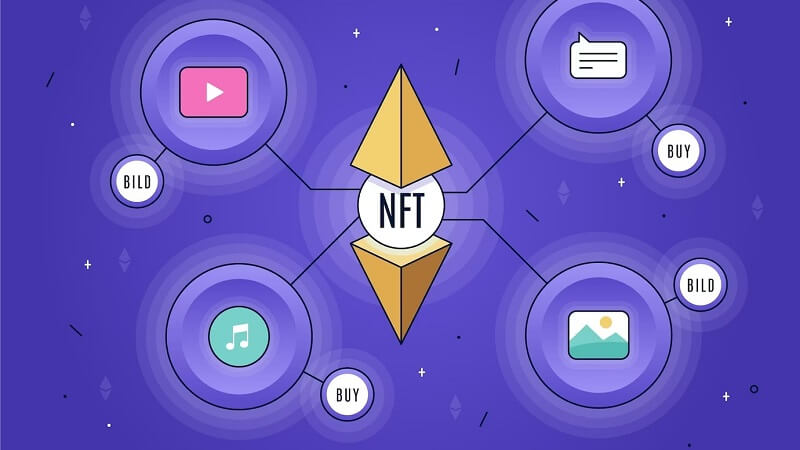Are NFTs dead? This question has sparked countless discussions within the digital landscape, igniting a debate about the future of non-fungible tokens (NFTs).
This article will delve into the vitality of the NFT market, analyzing the factors that are shaping its trajectory.

The Rise of NFTs
NFTs exploded onto the scene in 2020, offering a novel way for creators to monetize their work digitally.
Their defining characteristic is their non-fungibility, meaning each token is unique and irreplaceable.
This unprecedented form of digital ownership opened up a new world for artists, musicians, and other creators, marking a significant shift in how content can be bought, sold, and owned online.
Are NFTs Still a Thing: The Current State
However, with the rise of any new technology comes speculation about its sustainability. Hence, the queries, “Are NFTs dead?” and “Are NFTs still a thing?” have become prevalent topics in the crypto dialogue.
Examining the NFT Market Trends
When observing the NFT market trends, it’s essential to look beyond the surface. A casual, initial overview might suggest a decline. This perception primarily stems from the drastic ebb and flow in sales that characterized the early part of 2021. After the NFT market experienced an unprecedented surge in sales, a phenomenon fueled by a combination of novelty, high-profile auctions, and a global digital shift amid the pandemic, a significant drop followed.
This downturn led some industry observers and critics to prematurely herald the death of NFTs. The naysayers pointed to this decline as evidence of a speculative bubble that had finally burst. They drew parallels with the dot-com bubble of the late ’90s and the initial coin offering (ICO) craze of 2017, implying that NFTs were just another passing fad in the volatile world of cryptocurrencies and blockchain.
However, relying solely on these transient trends to predict the future of NFTs can be misleading. It’s important to remember that the NFT market, like any other, is subject to cycles of boom and bust. The rapid rise in NFT sales was largely driven by speculators looking to make a quick profit, which isn’t sustainable in the long run. The subsequent drop in sales, while perhaps sharper than expected, was a natural market correction and not necessarily indicative of a long-term decline.
Furthermore, focusing only on sales trends overlooks other important factors that influence the health of the NFT market. The level of innovation in the space, the growing number of artists and creators adopting NFTs, and the ongoing development of infrastructure and regulations for NFTs, are all bullish indicators for their future.

Beyond the Hype: The True Value of NFTs
While the initial frenzy surrounding NFTs has indeed cooled, this doesn’t necessarily signal their demise. Instead, it could indicate the market transitioning from a hype-driven phase to a more value-focused phase.
Are NFTs Dead or Just Maturing?
Instead of asking, “Are NFTs dead?”, perhaps a more accurate question is “How are NFTs maturing?“. The initial excitement around NFTs was largely fueled by their novelty and the potential for quick profits. However, as the market evolves, we’re starting to see a shift.
Clearly, there are NFT trends that affect the market, but this also happens in traditional markets.
NFTs with real utility and tangible value are maintaining interest, suggesting that we’re witnessing an evolution rather than a downfall.
NFTs and the Art World
Despite the market’s fluctuations, NFTs continue to be a disruptive force in the art world. By democratizing art ownership and providing new revenue avenues for artists, NFTs have proven that they are very much still a thing.
For example, the most expensive NFT art has outperformed many traditional artworks.

NFTs Beyond Art
While NFTs have had a profound impact on the art world, their potential extends far beyond. They’re also making waves in industries like real estate, gaming, and intellectual property rights, showcasing their versatility.
NFTs in Real Estate
In the real estate industry, NFTs can represent digital ownership of a physical property. This has the potential to streamline the buying and selling process, eliminate intermediaries, and even enable the fractional ownership of properties.
NFTs in Gaming
In the gaming industry, NFTs provide a method for players to truly own their in-game assets, such as characters, items, and land. This not only enhances the gaming experience but also opens up new economic opportunities for players.
For example, many free NFT games allow players to earn attractive amounts.
NFTs and Intellectual Property Rights
NFTs also hold potential in managing intellectual property rights. They could provide a transparent and efficient way of tracking the ownership of digital content, helping creators to protect and monetize their work.

Looking Ahead: The Future of NFTs
So, are NFTs dead? The evidence suggests not.
While the market has indeed experienced fluctuations, these can be attributed to the natural ebb and flow of a burgeoning industry.
Long-Term Viability of NFTs
The potential of NFTs goes beyond a passing fad. Their expansion into various sectors indicates a strong potential for long-term viability.
By offering a unique blend of digital ownership and scarcity, NFTs have found a niche that extends beyond art and into any digital asset that could benefit from provenance and ownership.
The Role of Blockchain Technology
Another crucial factor in the resilience of NFTs is the underlying blockchain technology. Its ability to revolutionize numerous sectors beyond finance could be a significant driver of NFTs’ relevance.
Blockchain technology ensures the security, transparency, and immutability of NFT transactions, which are essential characteristics for maintaining trust in the ecosystem.

Challenges and Controversies
As with any emerging technology, NFTs have not escaped their share of challenges and controversies.
These issues, which range from environmental concerns to market volatility, could potentially impact their future growth and broader acceptance.
Understanding and addressing these challenges is crucial for the continued evolution of NFTs. By acknowledging these potential hurdles, we can form a more balanced perspective on the question, “Are NFTs dead?”.
Environmental Concerns
One of the most significant controversies surrounding NFTs is their environmental footprint. Critics point to the high energy consumption of blockchain networks, particularly those that use proof-of-work consensus mechanisms, like Ethereum. These networks require significant computational power, leading to substantial electricity usage and, consequently, a sizeable carbon footprint. Some have equated the energy consumption of Ethereum to that of entire countries, raising valid concerns about the sustainability of NFTs in their current form.
This criticism has spurred a wave of innovation, with technologists and entrepreneurs actively seeking more energy-efficient alternatives. Several solutions are being explored, from the transition to proof-of-stake consensus mechanisms, which are considerably more energy-efficient, to the development of ‘green’ NFTs that offset their carbon emissions through various means. While these efforts are still in their early stages, they represent a promising step towards a more sustainable future for NFTs.
Market Volatility
Another significant challenge facing the NFT market is its high level of volatility. As with other cryptocurrency markets, NFT prices can skyrocket one moment and plummet the next. This volatility is driven by a variety of factors, including speculation, market sentiment, and the general lack of liquidity in the NFT market.
While this volatility can create opportunities for massive profits, especially for early adopters and savvy traders, it also comes with substantial risks. Buyers can face significant losses if the value of their purchased NFTs drops, and sellers can struggle to find buyers when the market is in a downturn. This volatility can also discourage more risk-averse individuals and institutions from participating in the NFT market, limiting its growth potential.
Additionally, the speculative nature of the NFT market raises concerns about potential market manipulation and fraud. There have been instances of wash trading, where the same asset is bought and sold repeatedly to artificially inflate its price, and pump-and-dump schemes, where the price of an asset is manipulated upwards before being sold off for a profit. These unethical practices can undermine trust in the NFT market and deter potential participants.
Conclusion: Evaluating the Health of Non-Fungible Tokens
So, are NFTs dead? Far from it. While the NFT market has seen its share of ups and downs, these fluctuations are part and parcel of a new and rapidly evolving industry.
Additionally, many NFT marketplaces are in very good health which is a great sign for the industry.
As the market matures, the focus appears to be shifting from speculative buying to genuine value and utility. As such, NFTs are not just “still a thing” — they’re a dynamic and evolving phenomenon that’s set to shape the digital landscape in the years to come.